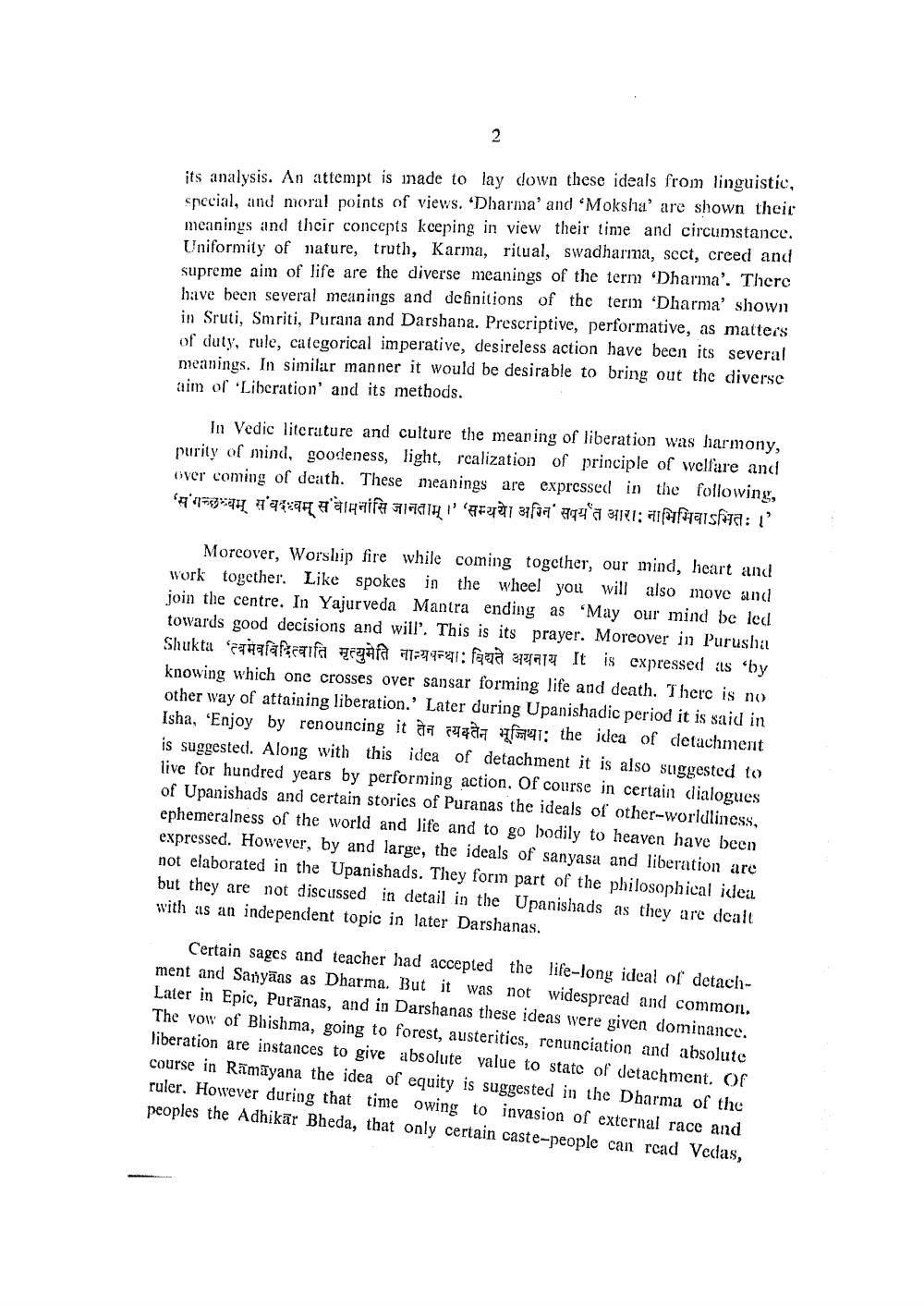Book Title: Sambodhi 1990 Vol 17 Author(s): H C Bhayani Publisher: L D Indology Ahmedabad View full book textPage 7
________________ its analysis. An attempt is made to lay down these ideals from linguistic, special, and moral points of views. 'Dharma' and 'Moksha' are shown their meanings and their concepts kceping in view their time and circumstance. Uniformity of nature, truth, Karma, ritual, swadharina, sect, creed and supreme aim of life are the diverse meanings of the term 'Dharma'. There have been several meanings and definitions of the term 'Dharma' shown in Sruti, Smriti, Purana and Darshana. Prescriptive, performative, as matters of duty, rule, categorical imperative, desireless action have been its several meanings. In similar manner it would be desirable to bring out the diverse aim of Liberation' and its methods. In Vedic literature and culture the meaning of liberation was harmony, purity of mind, goodeness, light, rcalization of principle of welfare and over coming of death. These meanings are expressed in the following, 1994 aaaaalaire 3170IĄ MAY 31f5a94a31N1: Afhaisfia: 1 Moreover, Worship fire while coming together, our mind, heart and work together. Like spokes in the wheel you will also move and join the centre. In Yajurveda Mantra ending as 'May our mind be led towards good decisions and will. This is its prayer. Moreover in Purusha Shukta hafalcaifa gara 717491: faga atu It is expressed as by knowing which one crosses over sansar forming life and death. There is no other way of attaining liberation.' Later during Upanishadic period it is said in Isha, 'Enjoy by renouncing it aa aa 4991: the idea of detachment is suggested. Along with this idea of detachment it is also suggested to live for hundred years by performing action. Of course in certain dialogues of Upanishads and certain stories of Puranas the ideals of other-worldliness, ephemeralness of the world and life and to go bodily to heaven have been expressed. However, by and large, the ideals of sanyasa and liberation are not elaborated in the Upanishads. They forin part of the philosophical idea but they are not discussed in detail in the Upanishads as they are dealt with as an independent topic in later Darshanas. Certain sages and teacher had accepted the life-long ideal of detachment and Sanyaas as Dharma. But it was not widespread and common. Later in Epic, Puranas, and in Darshanas these ideas were given dominance, The vow of Bhishma, going to forest, austeritics, renunciation and absolute liberation are instances to give absolute value to state of detachment. Of course in Rāmāyana the idea of equity is suggested in the Dharma of the ruler. However during that time owing to invasion of external race and peoples the Adhikar Bheda, that only certain caste-people can read Vedas,Page Navigation
1 ... 5 6 7 8 9 10 11 12 13 14 15 16 17 18 19 20 21 22 23 24 25 26 27 28 29 30 31 32 33 34 35 36 37 38 39 40 41 42 43 44 45 46 47 48 49 50 51 52 53 54 55 56 57 58 59 60 61 62 63 64 65 66 67 68 69 70 71 72 ... 151
